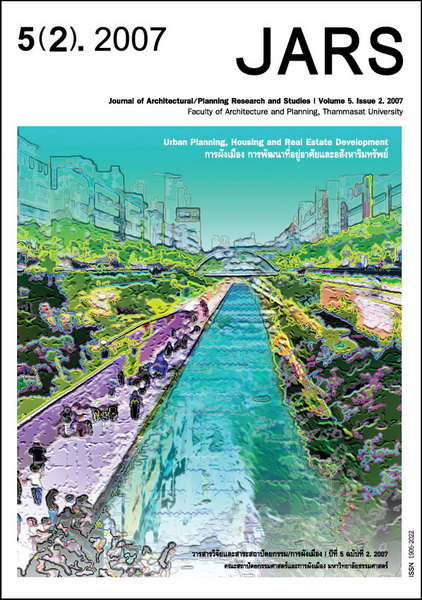CM Versus CA
Main Article Content
Abstract
A typical architectural project delivery is comprised of Designing, Bidding, and Building. Construction or building is the final and important step to make design become reality. It is impossible to become a real design professional without having a good understanding of construction and its logic. After completion of the design process, all design professionals need to get involved in construction to ensure that design gets built as intended. Here begins the Construction Administration or CA. CA is a required process for every project if it is permitted to build. To administer is to direct, supervise, and ease the execution of a construction project. This term is often confused with Construction Management or CM because their translation in Thai could be interpreted with similar meanings, which produce misuse and misunderstanding in construction studies. To manage is to direct and exhibit control over. The verb “to manage” sounds similar in meaning as “to administer” when translating in Thai. When they are tied to construction, they are quite different. Construction management is a consulting service to the project owner with special intent. The intent commonly has to deal with saving in cost, time, and quality. Consulting can be in the form of being owner’s representative, cost control, quality control, scheduling control, or all of these. CM is considered as an extra service, not required as CA. The bottom line is that CM and CA are two different disciplines, when comes to their incentives, responsibilities, length, and goals. To straighten out the confusion, this article will discuss more elaborately, the definitions, distinctions, and misinterpretation of these two terms. It also further discusses how CA and CM will affect the future of the construction business.
Downloads
Article Details

This work is licensed under a Creative Commons Attribution-NonCommercial-NoDerivatives 4.0 International License.
All material is licensed under the terms of the Creative Commons Attribution 4.0 International (CC-BY-NC-ND 4.0) License, unless otherwise stated. As such, authors are free to share, copy, and redistribute the material in any medium or format. The authors must give appropriate credit, provide a link to the license, and indicate if changes were made. The authors may do so in any reasonable manner, but not in any way that suggests the licensor endorses you or your use. The authors may not use the material for commercial purposes. If the authors remix, transform, or build upon the material, they may not distribute the modified material, unless permission is obtained from JARS. Final, accepted versions of the paper may be posted on third party repositories, provided appropriate acknowledgement to the original source is clearly noted.
References
Hendrickson, C. (1989). Project management for construction. Englewood Cliffs, NJ: Prentice-Hall.
Levy, S. M. (1994). Project management in construction (2nd ed.). New York: McGraw-Hill.
Merriam-Webster Online Dictionary. (n.d.). Administration. Retrieved from http:// www.m-w.com/dictionary/administer
Kavanagh, T. C. (1978). Construction management: A professional approach. New York: McGraw-Hill.
American Institute of Architects. (1994) The architect’s handbook of professional practice. Washington DC: AIA Press.
R., & Reynolds, W. D. (2006). Construction project administration (8th ed.). Upper Saddle River, NJ: Prentice-Hall.
Ritz, G. J. (1994). Total construction project management. New York: McGraw-Hill.
May, P. C., & Novitski, B. J. (1997). Construction administration: An architect guide to surviving information overload. New York: John Wiley & Sons.


